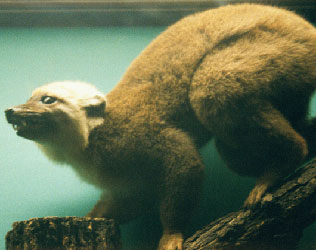

| MORPHOLOGY: This species has binocular vision, like all of the true lemurs. Has scent glands located at the wrist throat that are used in olfactory communication. Average body mass between 2 and 4 kilograms. The brown lemur is sexually dichromatic, males and females have different fur patterns (Fleagle, 1988). RANGE: Found on Madagascar and the Comoro Islands. |
 |